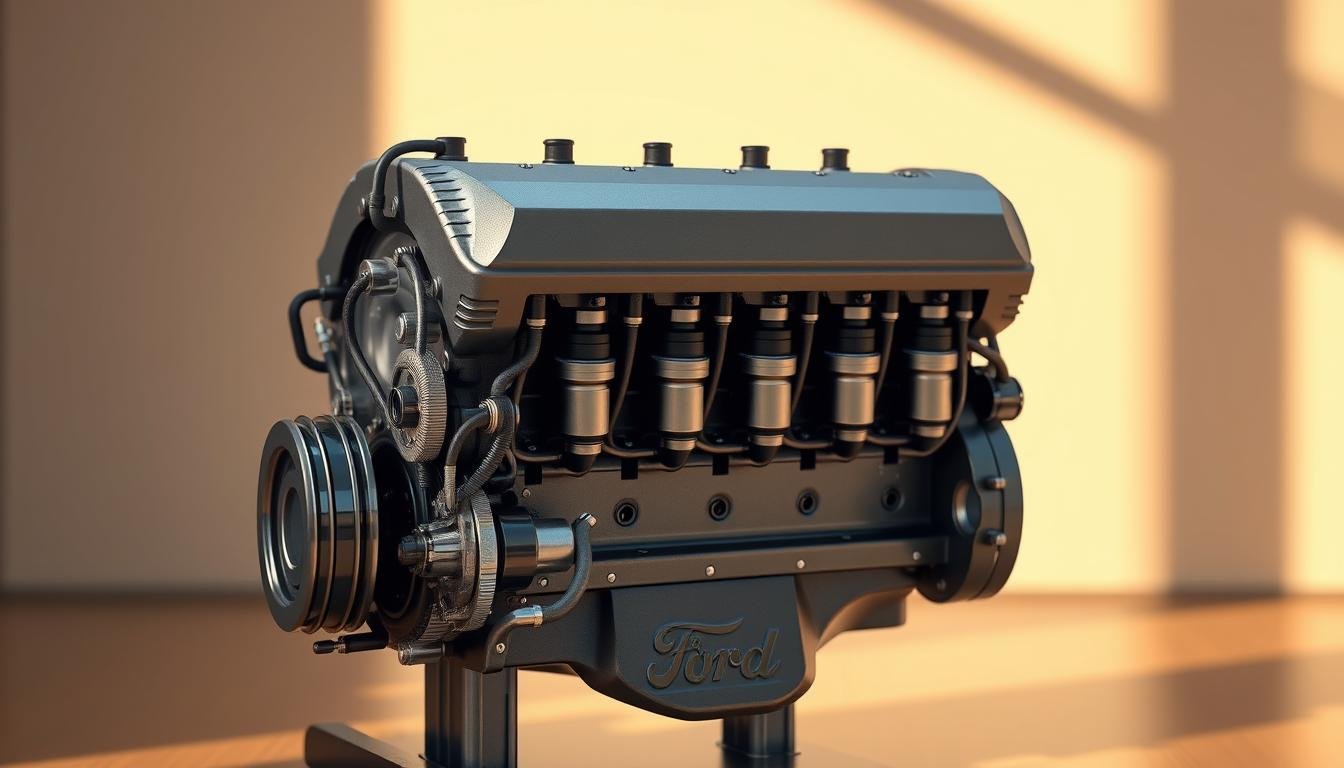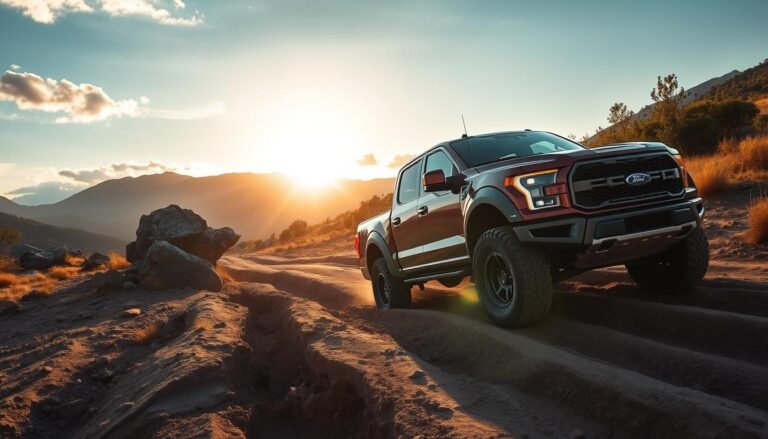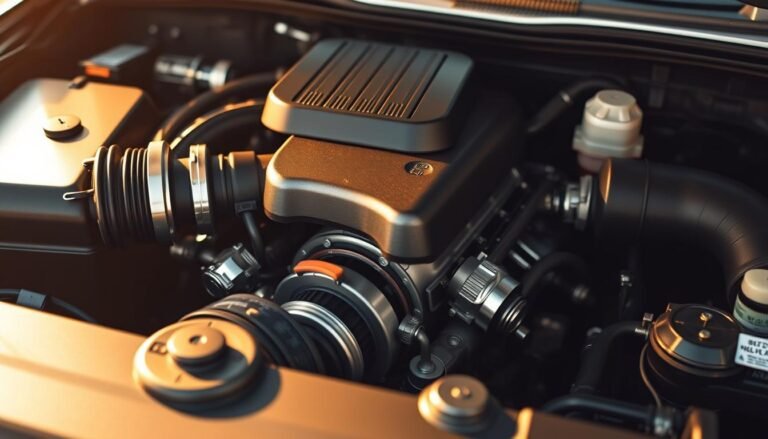Ranger v6 Cylinder Ford 3.0 V6 Firing Order Essential Guide
Knowing the ranger v6 cylinder ford 3.0 v6 firing order is key for a smooth, efficient engine.
The firing order, or how the cylinders ignite fuel, impacts performance and engine life. This guide shows you the correct firing order and how to troubleshoot common issues.
It explains why this knowledge is a must for good engine function. Maintaining the correct firing order affects horsepower and fuel efficiency.
We’ll explore the Ford 3.0 V6 engine’s specs, why firing order matters for top performance, and how to wire it right.
By learning this, you can help your vehicle last longer. If you’re a DIY fan or a Ford Ranger owner wanting better performance, this guide is for you.
It gives you the key details on the Ford Ranger 3.0 firing order. Let’s discover how to use this info for your vehicle.
What is The Ford 3.0 V6 Engine?
The Ford 3.0 V6 engine is known for its reliability in Ranger models. It combines efficiency with good performance. The engine’s 60-degree V shape helps it run smoothly.
When you look at the ford ranger v6 engine specs, you’ll find it has 140 horsepower and 160 lb-ft of torque. These numbers show it’s strong on the road.
Learning about the ford 3.0 v6 specs tells us more about its fuel use and how it works. This engine is designed to last and to work well, making it popular among car owners.
It’s all about great performance and using fuel wisely. That’s what makes the Ford 3.0 V6 engine a smart choice.
Specifications of The Ford Ranger V6 Engine
The Ford Ranger 3.0 V6 engine is known for its strong performance. It has a 3.0 liter capacity which helps in producing power efficiently.
Its compression ratio is 9.2:1. This means it can turn fuel into power very well. This engine’s design includes SOHC technology.
This helps the engine use fuel better, letting you drive more without using too much gas. From 1993 to 2012, the engine got better and kept its high performance.
| Model Year | Horsepower | Torque (lb-ft) | Fuel System |
|---|---|---|---|
| 1993 | 145 hp | 180 lb-ft | Fuel Injection |
| 2000 | 155 hp | 180 lb-ft | Fuel Injection |
| 2005 | 148 hp | 180 lb-ft | Fuel Injection |
| 2010 | 148 hp | 180 lb-ft | Fuel Injection |
| 2012 | 147 hp | 154 lb-ft | Fuel Injection |
Learning about the Ford Ranger V6 engine specs shows how it has changed to suit different driving needs.
Knowing these details can help you keep your vehicle in top shape and maybe even improve its performance.
Importance of The Firing Order in Engine Performance
The firing order is crucial for the Ford 3.0 V6 engine. It decides the order in which the engine’s cylinders light up.
Knowing this sequence is key for anyone looking to keep their engine running well. A correct firing order ensures the engine runs smoothly.
It helps save fuel and reduces wear on important parts like spark plugs and ignition coils. If the order is wrong, you might see misfires, less power, and bad combustion.
Proper engine timing also depends on the firing order. With the right order, each cylinder fires just at the right moment.
This means better speed and engine performance. Plus, it avoids too much shaking, which can cause engine problems later.
| Firing Order Effect | Correct Order | Incorrect Order |
|---|---|---|
| Smooth operation | Yes | No |
| Fuel efficiency | Enhanced | Reduced |
| Component wear | Minimized | Increased |
| Acceleration | Improved | Sluggish |
| Vibration | Stable | Excessive |

Ranger V6 Cylinder Ford 3.0 V6 Firing Order
The Ford Ranger 3.0 V6’s firing order is key for the engine to work well. The sequence, 1-4-2-5-3-6, makes sure ignition timing is correct.
Each cylinder connects to a coil pack that ignites two cylinders. It’s important to follow this order to keep your engine running smoothly.
Learning The Firing Order Sequence
Knowing the Ford Ranger 3.0 V6 firing order diagram helps you see how your vehicle’s ignition works.
The right firing order makes the engine run smoothly. If it’s wrong, your car might not drive well.
Common Issues Related To Incorrect Firing Order
Connecting things wrongly can cause issues like:
- Rough idling
- Decreased power output
- Increased emissions
- Backfiring through the intake or exhaust
Spotting these problems early helps you fix them quickly. This stops more damage to your engine.
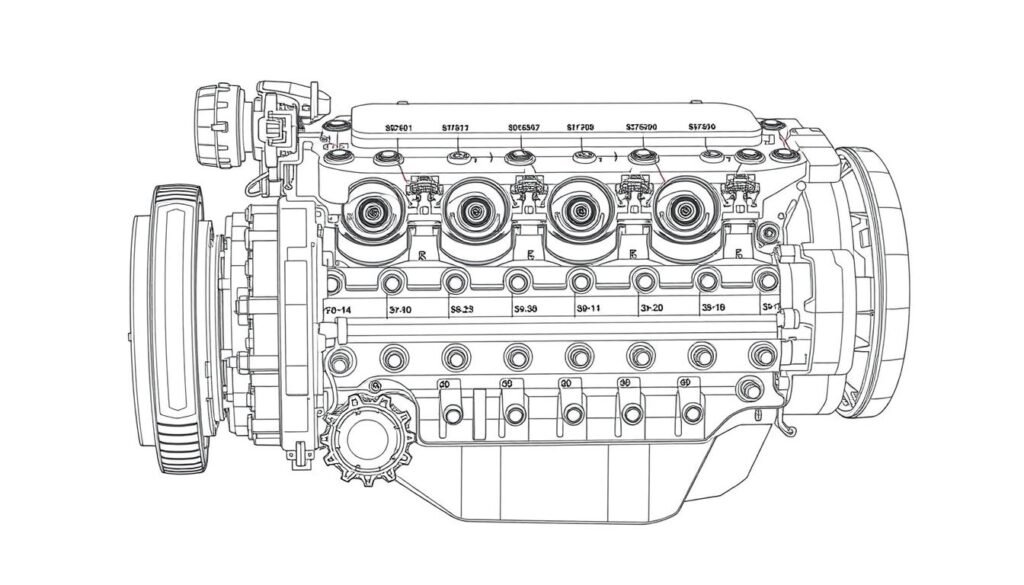
| Cylinder Number | Coil Pack | Firing Order Position |
|---|---|---|
| 1 | A | 1 |
| 4 | B | 2 |
| 2 | A | 3 |
| 5 | B | 4 |
| 3 | A | 5 |
| 6 | B | 6 |
Firing Order Diagram For The Ford Ranger 3.0 V6
A picture helps a lot when learning the firing order of the Ford Ranger 3.0 V6. This diagram shows the setup of the cylinders and their firing sequence.
It makes it easy to see how the cylinders work together and link to the ignition. Having the right diagram helps you put spark plug wires in the right spots and find problems quickly.
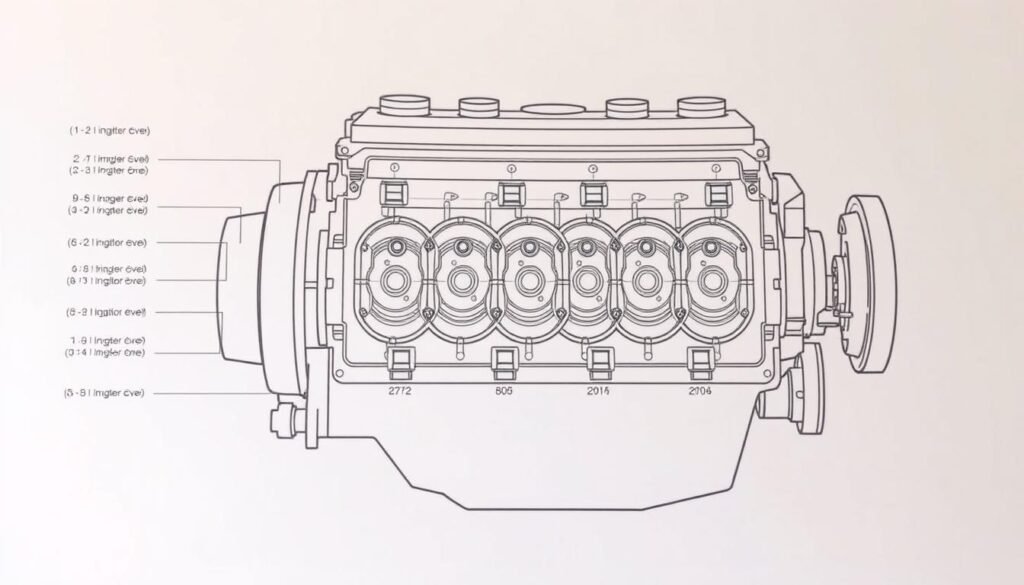
Here’s a table that lists the cylinder numbers and the order they fire in the Ford Ranger 3.0 V6:
| Cylinder Number | Firing Order Position |
|---|---|
| 1 | 1 |
| 2 | 2 |
| 3 | 3 |
| 4 | 4 |
| 5 | 5 |
| 6 | 6 |
This diagram lets you see how the cylinders connect. It helps you understand the firing order well.
Knowing how to read this diagram can really help with keeping your Ford Ranger 3.0 V6 running smoothly.
Visual Representation of Ford Ranger 3.0 V6 Cylinder Layout
Knowing the Ford Ranger V6 cylinder layout is key to good vehicle care. The cylinders are set up with 1-3 on the driver’s side and 4-6 on the passenger side.
This helps with wiring, upkeep, and fixing engine problems efficiently.
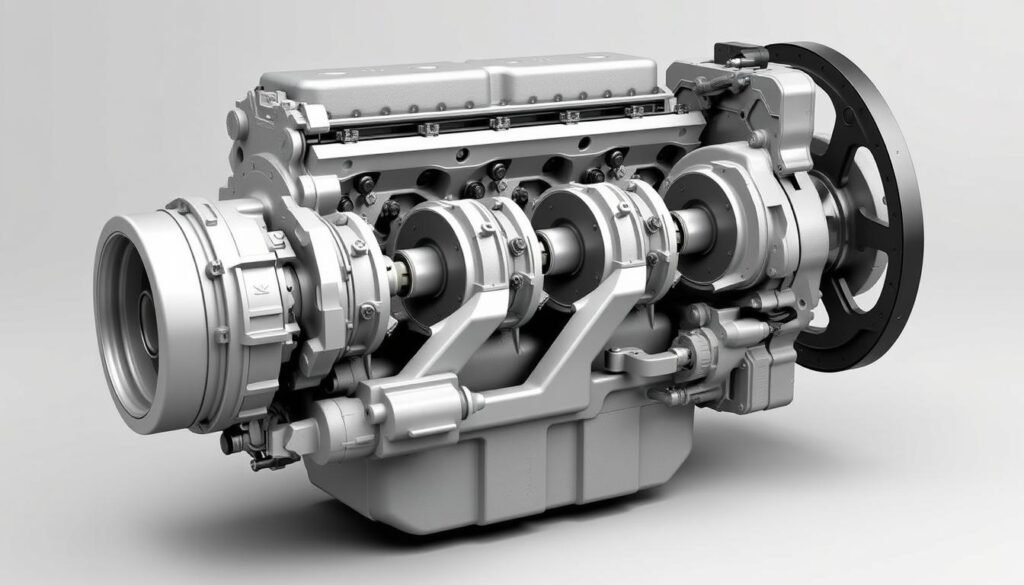
Interpreting The Cylinder Layout for Better Maintenance
Knowing the Ford Ranger V6 cylinder layout improves vehicle care. You should know:
- Where each cylinder is when fixing ignition problems.
- How the layout aids in regular maintenance checks.
- The way to spot engine issues by monitoring cylinder performance.
This knowledge ensures your maintenance work is complete and effective.
How To Identify Cylinder Numbering on The 3.0 V6?
Learning the ford 3.0 v6 cylinder numbering is key for good engine care. The system starts with cylinder 1 at the engine’s front.
As you look towards the back, cylinder 2 is next, with cylinders 3, 4, 5, and 6 following in order. This setup helps in correctly wiring ignition coils and fitting spark plugs.
Knowing how the cylinders are arranged helps pinpoint engine issues and prevent misfires.
It makes talking to mechanics about repairs or parts easier. A clear map of the cylinder placement boosts your confidence in handling engine jobs.
| Cylinder Number | Position |
|---|---|
| 1 | Front |
| 2 | Second from the front |
| 3 | Middle |
| 4 | Second from the rear |
| 5 | Rear |
| 6 | Last (depends on specific engine layout) |
Using this guide will help you smoothly handle any work on the ford 3.0 v6 engine.
Step-by-Step Guide To Correctly Wiring The Firing Order
Wiring the firing order of your Ford Ranger 3.0 the right way is key for good engine performance. Use this guide to make sure you do it correctly.
- Identify the cylinder numbers based on the cylinder layout. Knowing the layout allows for precise wiring.
- Connect the spark plug wires to the ignition coil pack in the correct order. It’s important because the right firing order for the Ford Ranger 3.0 prevents engine misfires.
Cylinder Number
Coil Pack Connection
1
Coil Pack A
2
Coil Pack B
3
Coil Pack C
4
Coil Pack D
5
Coil Pack E
6
Coil Pack F- Ensure the spark plug wires are firmly attached. Loose connections may cause various performance issues.
- Use cable ties to secure the spark plug wires along the engine. This tidy arrangement prevents tangling and damage.
- Double-check your work. Review your connections against the firing order diagram to confirm accuracy.
By following these steps for wiring the firing order on your Ford Ranger 3.0, you’ll boost engine performance and gain peace of mind, knowing everything is set up correctly.
Troubleshooting Firing Order Issues in The Ranger 3.0 V6
If your engine’s performance drops, it’s vital to check the firing order issues fast. You might notice misfiring, rough idling, or less power. These are signs of problems with the Ranger 3.0 V6’s firing order.
- Engine Misfiring: You might experience a noticeable loss of power or uneven acceleration.
- Rough Idling: If your engine shakes or vibrates more than usual when stopped, this could indicate a firing order issue.
- Poor Fuel Efficiency: A drop in gas mileage may suggest that the firing sequence is no longer optimal.
- Engine Warning Light: Keep an eye on the dashboard indicator for any signs of trouble related to the firing order.
To fix the firing order on your Ranger 3.0 V6, try these diagnostic steps:
- Inspect Spark Plug Wires: Make sure all connections are tight and wires are undamaged.
- Check for Loose Connections: Look at all ignition system’s electrical parts to ensure they fit correctly.
- Use a Diagnostic Scanner: A scan tool can identify error codes linked to the firing order issues.
- Verify Firing Order Sequence: Double-check that wiring and plug connections follow the engine’s correct firing order.
By noting these symptoms and following the troubleshooting steps, you can fix Ranger 3.0 V6 problems effectively.
Acting quickly on these issues can result in timely repairs. This keeps your engine running well.
Conclusion
Compromise the firing order for the Ford 3.0 V6 is key for the best engine performance.
Correct wiring is crucial because bad connections harm efficiency and can damage the engine.
Knowing the right firing sequence lets you keep your vehicle in top shape, offering a smoother ride.
Following these steps, your Ford Ranger’s engine will last longer. Knowing how wiring impacts performance helps you look after your vehicle confidently.
This knowledge saves you time, avoids repairs, and shows you care about your vehicle’s health.
Learning the Ford 3.0 V6 engine’s firing order lets you take care of your vehicle better.
Using this guide, you can handle maintenance with confidence. Your Ford Ranger will stay reliable and perform well for many years.
FAQs
Q: What is the firing order for the Ford Ranger 3.0 V6 engine?
A: The firing order for the Ford Ranger 3.0 V6 is 1-4-2-5-3-6.
Q: How does the firing order affect engine performance?
A: An incorrect firing order can cause misfires and less power. It also leads to poor combustion. This affects the engine’s overall performance.
Q: How do I identify cylinder numbering on my Ford Ranger 3.0 V6?
A: Cylinder 1 is at the engine’s front. Numbers go towards the back. They are 1-3 on the driver’s side and 4-6 on the passenger side.
Q: What are some symptoms of firing order-related issues?
A: You might notice rough idling and less power. Emissions could increase, and backfiring might happen through the intake or exhaust.
Q: How can I troubleshoot firing order issues?
A: Check the ignition coils’ wiring. Make sure spark plug wires are correct according to the firing order.
Q: What specifications define the Ford 3.0 V6 engine?
A: This engine has a 3.0-liter displacement and a 9.2:1 compression ratio. It offers 140 horsepower and 160 lb-ft of torque.
Q: Why is understanding the cylinder layout important?
A: Knowing this layout helps correctly wire the ignition. It aids in maintenance checks and solving engine problems.
Q: What is the significance of a firing order diagram?
A: A diagram shows cylinder arrangements and their firing sequence. It helps in the correct installation and diagnosing problems.

